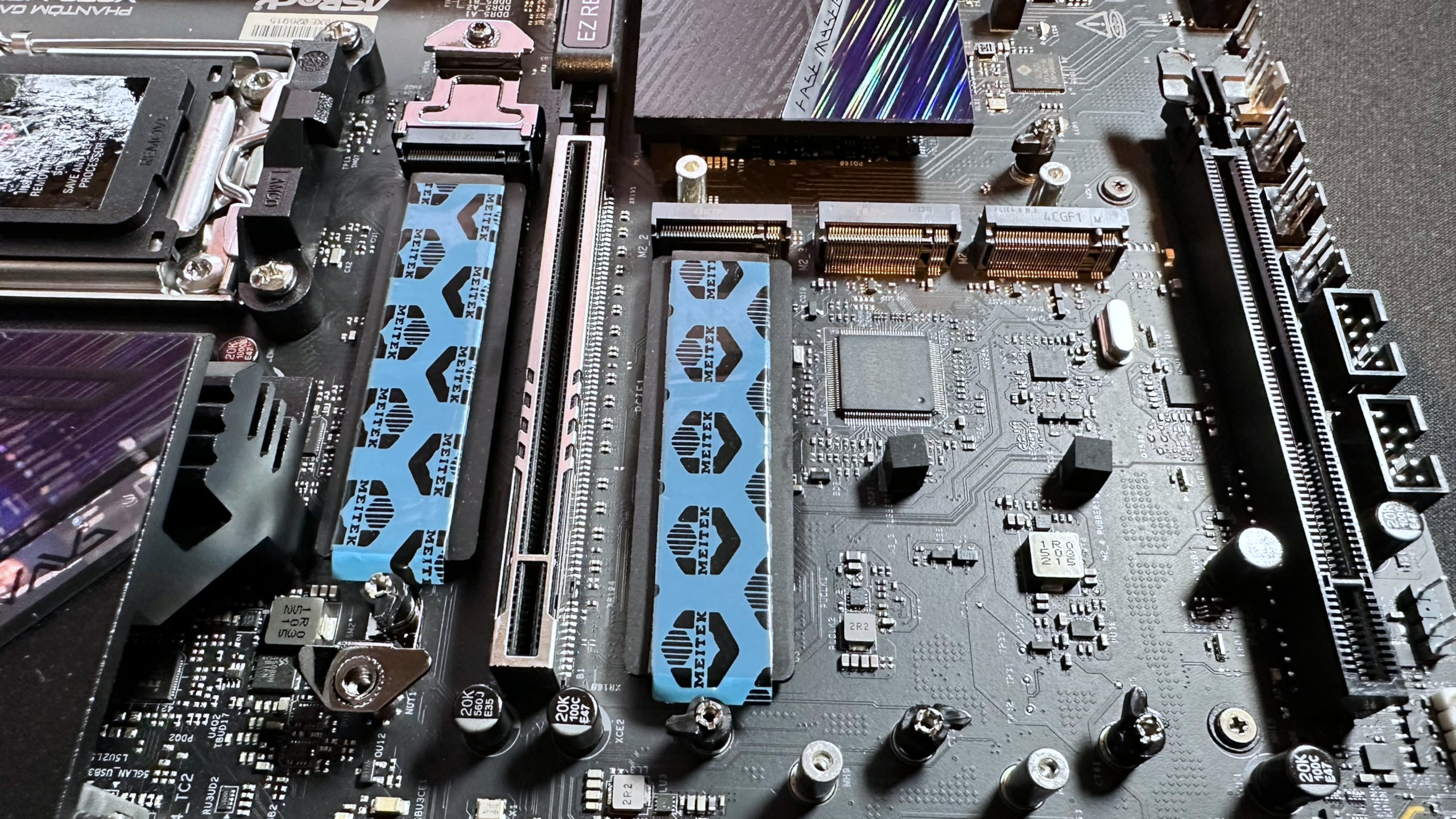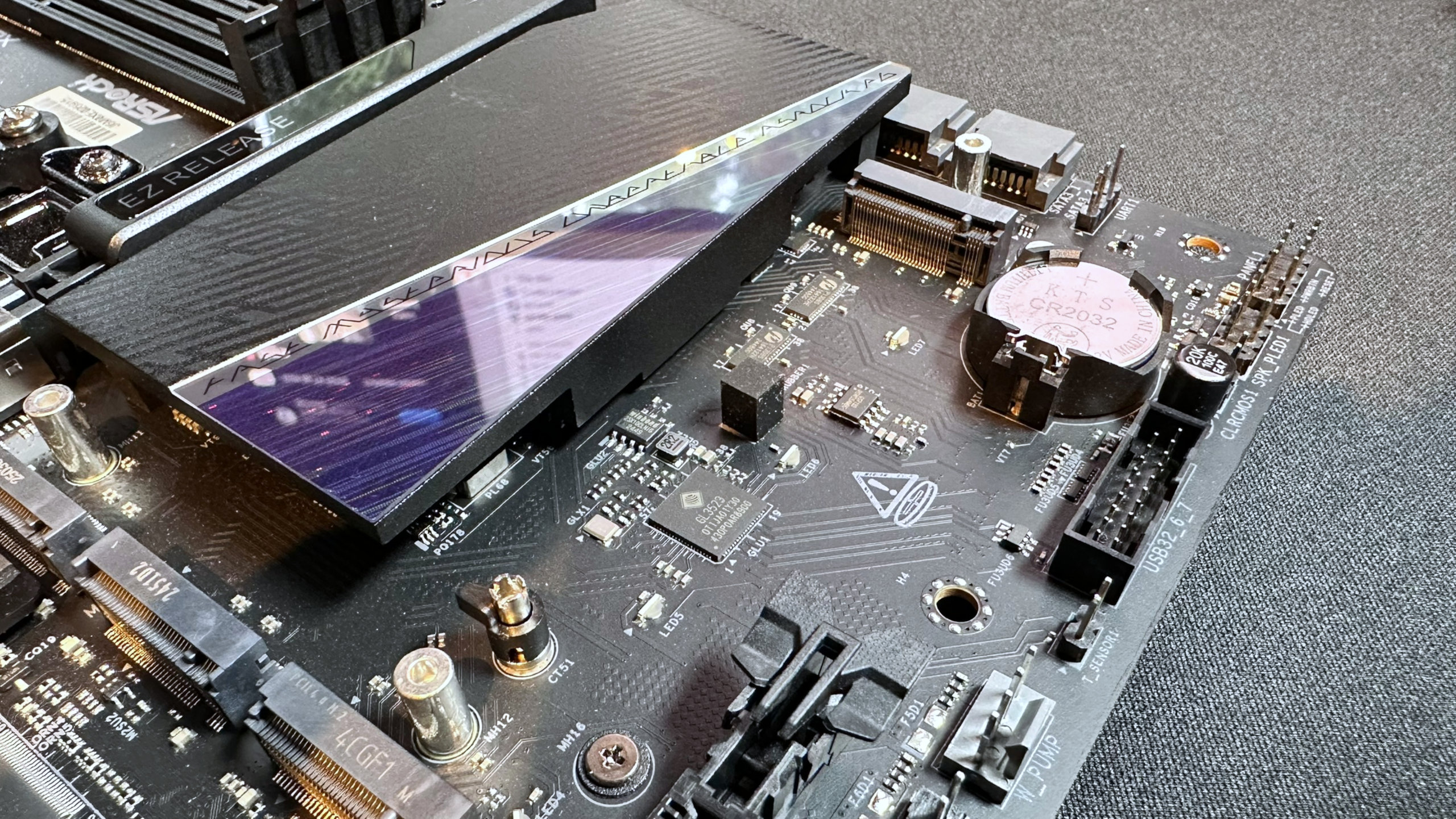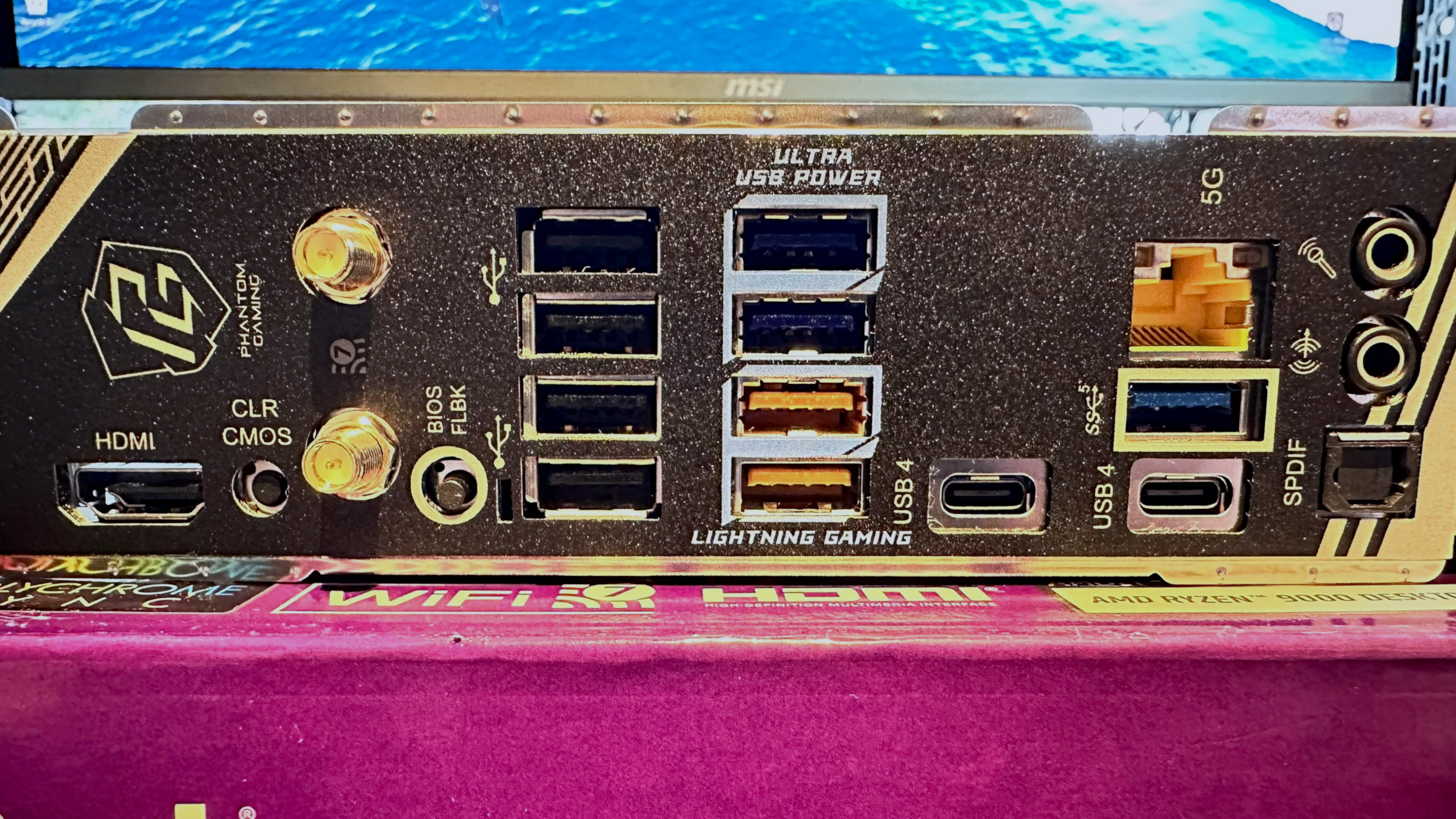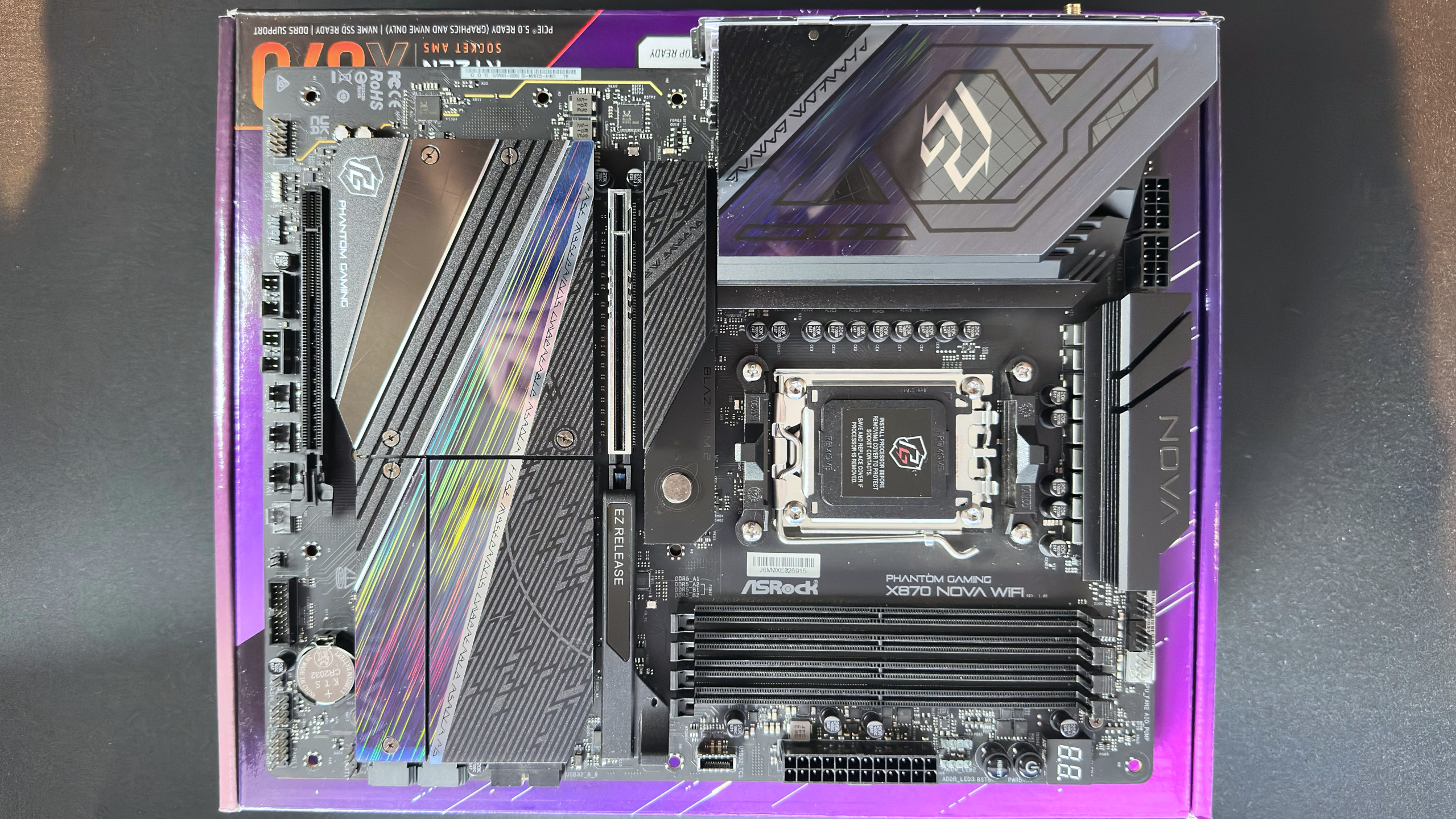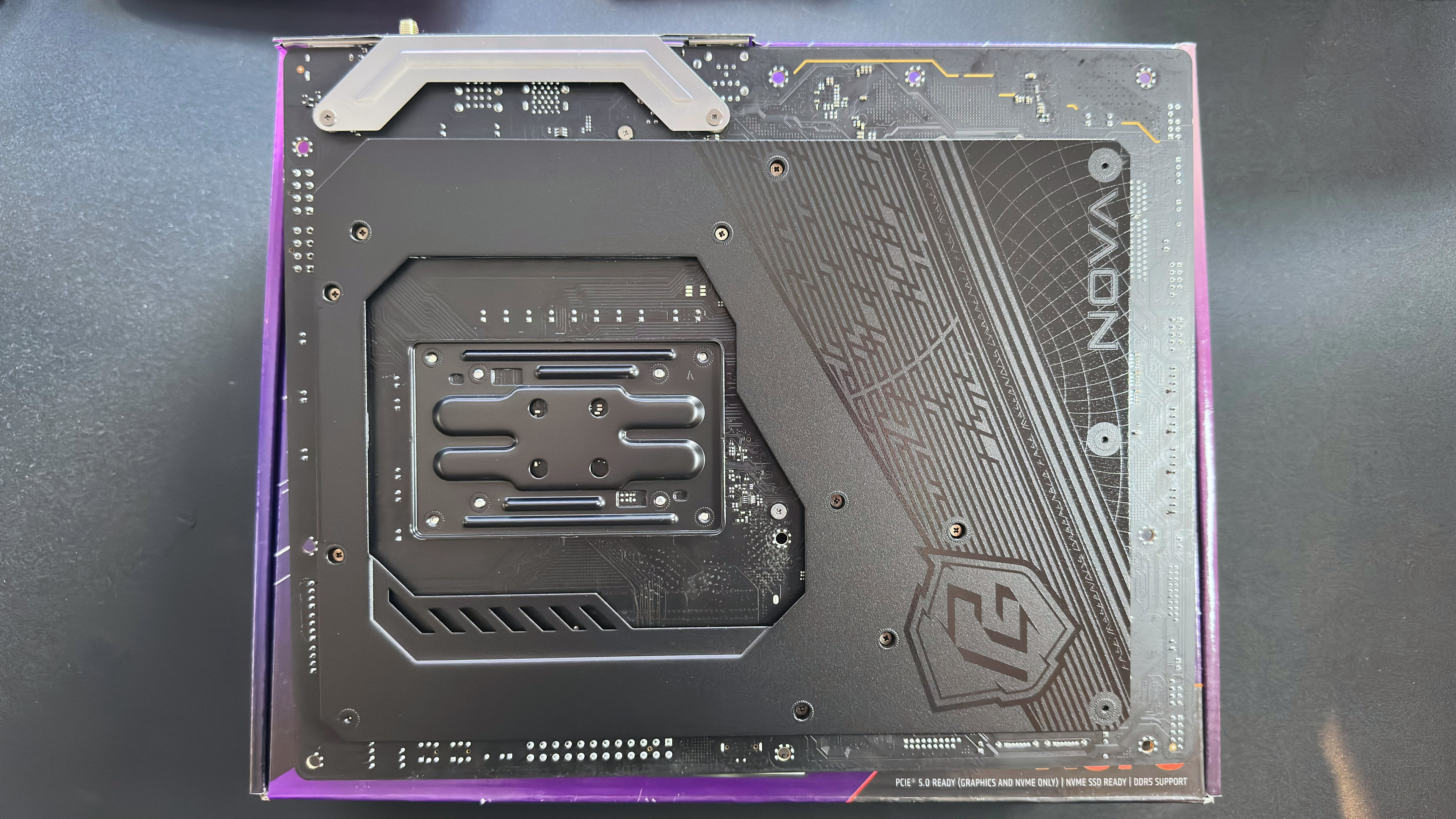For greater than 20 years, ASRock has been churning out motherboards for nearly each attainable PC consumer and situation. They had been all very barebones and practical, although, and it wasn’t till 2010 that it particularly focused the gaming sector, with a collaboration with esports participant Fatal1ty. Quick ahead to 2019, and ASRock broadened its gaming enchantment with the primary of its Phantom Gaming collection of motherboards.
These had been designed “carefully with companions to fine-tune the merchandise, and to make sure each product can ship excellent gaming expertise.” Effectively, I can say now that one in all its most up-to-date Phantom Gaming choices, the X870 Nova WiFi is neither fine-tuned nor delivers something like an impressive gaming expertise.
Do not get me flawed: it isn’t a unhealthy motherboard. It is simply that it is hampered by quite a few compromises, middling efficiency, and a price ticket that is a contact too excessive in immediately’s aggressive market.
ASRock Phantom Gaming X870 Nova WiFi specs
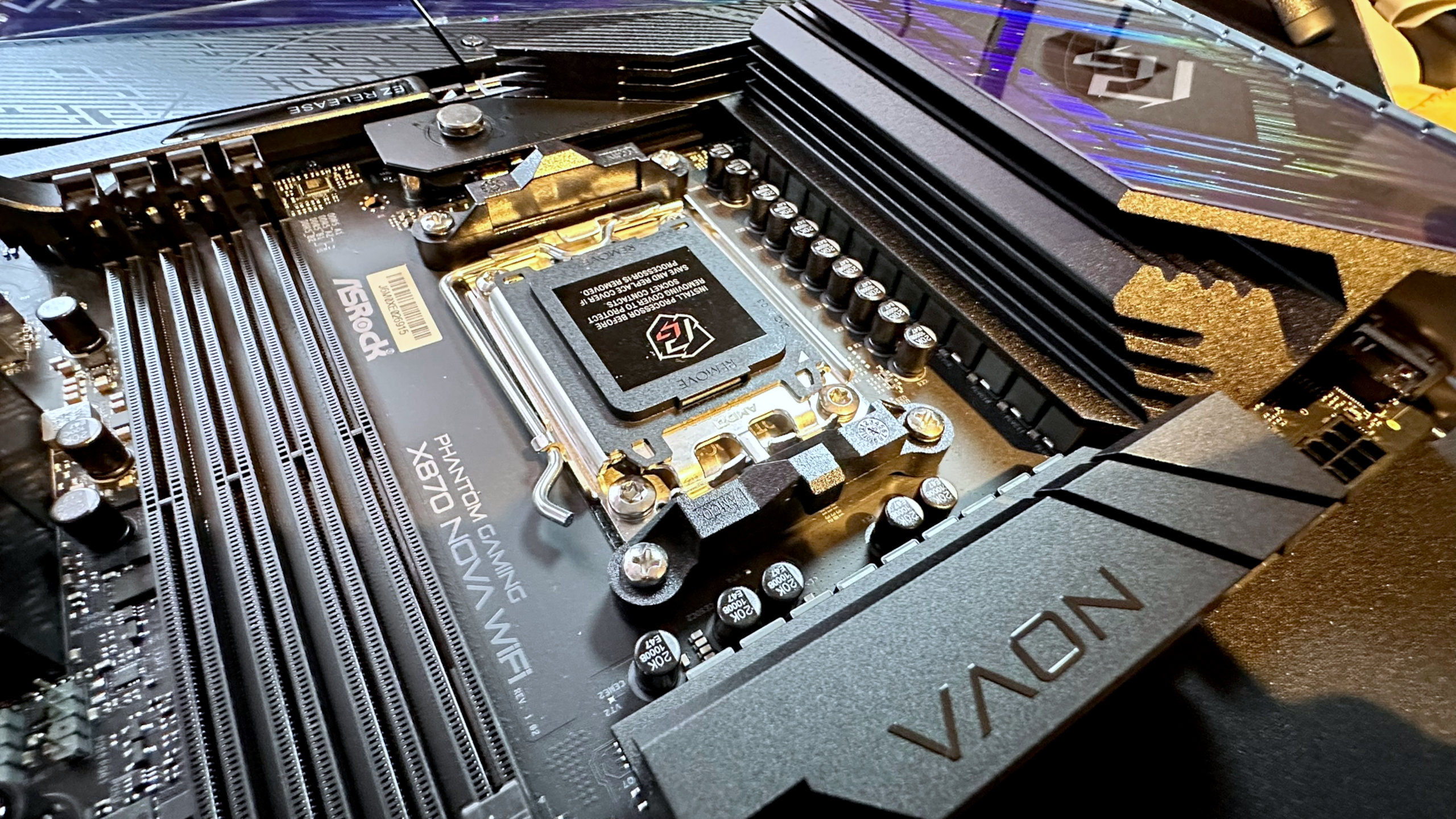
Socket: AMD AM5
Chipset: AMD X870
CPU compatibility: AMD Ryzen 7000, 8000, 9000-series desktop
Kind issue: ATX
Reminiscence help: DDR5-4800 to DDR5-8400+ (OC), as much as 256 GB
Storage: 5x M.2, 2x SATA
USB (rear): 2x USB4 Kind-C 40 Gbps, 2x USB 3.2 Kind-A ten Gbps, 3x USB 3.2 Kind-A 5 Gbps, 4x USB 2.0
Show: 1x HDMI 2.1, 2x DisplayPort through USB4
Networking: Realtek 5 Gbps LAN, Wi-Fi 7, Bluetooth 5.4
Audio: Realtek ALC4082
Value: $280 / £247
ASRock set the Phantom Gaming X870 Nova’s MSRP at $300 for launch, barely a month in the past, nevertheless it’s already been diminished to $280 at varied retailers across the globe. It isn’t an enormous discount, besides, the general worth is not fairly low sufficient for what you are getting.
The issue is that what appears to be like nice on paper does not translate right into a dropped jaw when skilled first-hand. That is very true of the primary characteristic of ASRock’s Nova fashions: a mountain of M.2 slots for SSDs.
There are 5 M.2 slots in complete: two Gen5, two Gen4, and one Gen3. Sounds okay, sure? Effectively, that fifth PCIe 3.0 slot solely makes use of two PCIe lanes, so not solely is it two generations outdated, it is also half the pace. Oh, and you will lose the 2 SATA ports should you do use it.
Then, should you set up any sort of SSD within the second M.2 slot and use both of the 2 USB4 ports on the rear IO panel, each programs will run at half pace. You’ll be able to override this within the UEFI/BIOS, in order that the M.2 slot is totally 4x, however that can fully disable the USB4 ports.
Lastly, should you stick an SSD into the second Gen4 slot, the x16 PCI Specific slot on the backside of the motherboard will…you guessed it…run at half pace. On condition that it is electrically an x4 slot to start with, that leaves you with simply two PCIe lanes. Tremendous for one thing like a sound card, however not so good should you deliberate on organising the X870 Nova in a dual-GPU AI rig.
It is a comparable state of affairs with the remainder of the rear IO panel’s sockets. Whereas there are 11 USB ports in complete, solely 4 of them are actually quick: the 2 USB4 and the 2 yellow ones (40 Gbps and 10 Gbps, respectively). The remainder are fairly fundamental, 5 Gbps in pace or USB 2.0, which is absolutely solely quick sufficient for mice and keyboards.
All of that is brought on by the truth that AMD Ryzen processors and the solitary X870 chip within the motherboard solely have so many PCI Specific lanes, and each PCIe slot, M.2 socket, and SATA and USB port has to share them. There are simply not sufficient lanes to make sure they will all run at max pace if used collectively.
Whereas we’re with reference to the M.2 slots, it is value noting that solely the first slot between the CPU and high PCIe slot has a quick-release heatsink and SSD mounting system. It is solely one in all two M.2 slots that has a thermal pad on the motherboard itself.
The 2 Gen4 and sole Gen3 slots have conventional heatsinks that require nimble fingers and a precision screwdriver to take away and reinstall them. A minimum of, all of them have quick-release mounting programs for SSDs, although should you plan on becoming something apart from 2280-sized drives, you may be out of luck, as that is the solely dimension the motherboard helps.
The remainder of the Phantom Gaming X870 Nova’s niceties embrace a board-mounted energy button and a BIOS code LED show, each of that are helpful for testers like me, but additionally useful for that preliminary boot-up check when constructing a gaming rig. There are many fan headers, although they are not positioned very effectively and configuring them within the UEFI could be very clunky.
Benchmarks and efficiency
PC Gamer check rig
CPU: AMD Ryzen 9 9900X | Cooler: Asus ROG Strix LC III 360 | RAM: 32 GB Lexar Thor OC DDR5-6000 | GPU: Zotac GeForce RTX 4070 | Storage: 2 TB Corsair MP700 | PSU: Thermaltake ToughPower PF3 1050 W | OS: Home windows 11 25H2 | Chassis: Open platform | Monitor: Acer XB280HK
Since AMD launched its Ryzen 9000-series of processors final yr, related motherboards, Home windows, and AMD’s drivers have all undergone a wealth of updates to enhance energy administration, thread scheduling, and RAM compatibility. For the efficiency assessments of the ASRock X870 Nova, I used its newest 3.50 BIOS, which contains AMD’s most up-to-date microcodes for the CPU.
Theoretically, there ought to be no distinction between any AM5-socket motherboard if one makes use of the identical {hardware}, however because of the fixed nature of firmware and software program updates, you’ll at all times see some disparities between motherboards examined a couple of months in the past and something model new.
However even accounting for that, the X870 Nova WiFI is fairly underwhelming in our gaming benchmarks. It is attainable that Microsoft’s newest 25H2 replace to Home windows 11 is chargeable for a part of the efficiency deficiency, however I believe that it is extra to do with ASRock being very conservative with its CPU and RAM settings.
If that is the case, then it is a symptom of ASRock’s answer to a run of CPU failures some folks had been experiencing with its motherboards. Given the very quick time any reviewer will get with a motherboard, it is unattainable to inform if ASRock has totally solved the problem, and though I am fairly assured it has, any cautious purchaser is prone to be cautious of selecting up an ASRock AM5 motherboard for the time being.
So, not nice, however not unhealthy, at gaming. Thankfully, no matter ASRock is doing to have an effect on our recreation benchmarks, it has no influence on Cinebench, Blender, and 7zip. The entire above outcomes are completely regular for a Ryzen 9 9900X, and I repeated all of these assessments a number of instances to substantiate the figures.
7zip is way extra affected by RAM speeds and timings than the opposite two benchmarks, however since that is okay as effectively, it does imply the Phantom Gaming X870 Nova is value contemplating for a content material creation rig. Effectively, a content material creation rig that solely makes use of a few SSDs at most.
On the plus aspect, even when the Ryzen 9 9900X was pulling its most energy consumption of 162 W for effectively over 10 minutes, the voltage regulator modules (VRMs) barely bought scorching. With a peak temperature of simply 50 °C, it is clear that ASRock has put in a really stable heatsink and thermal pad answer on the X870 Nova.
Alas, the identical cannot be stated in regards to the M.2 slots. The first slot solely nearly copes with a PCIe 5.0 SSD, and at a peak of 78 °C, that is near hitting the thermal restrict of the Corsair drive used. Nevertheless, should you keep on with utilizing a Gen4 SSD or purchase one of many very newest Gen5 SSDs (which do run loads cooler than the primary era of PCIe 5.0 drives), then try to be superb.
I did discover that the second Gen5 M.2 slot carried out somewhat higher, when it comes to thermals, and that is in all probability as a result of there is a wider space of steel to dissipate warmth from. We’re solely speaking a couple of handful of levels, although, and do you have to match one other SSD below that heatsink, that distinction will certainly evaporate.
The one factor that did catch my eye (and palms) with the ASRock Phantom Gaming X870 Nova WiFi is simply how stable it feels and the way good it appears to be like, below a sure gentle. There’s a strip of LEDs alongside the underside fringe of the board however none wherever else, so the aesthetics aren’t as a result of them: it is the coating on the M.2 heatsinks that is chargeable for the beautiful appears to be like.
Across the again of the motherboard, there is a very massive slab of metal, there to stop any attainable flexing of the board when fitted with a large graphics card. I do want extra producers would do that as a result of the X870 Nova feels very sturdy. It does make it fairly heavy, in fact, however not less than you get a way of high quality to all of it.
Conclusion
Purchase if…
✅ You need a number of connectivity choices: 5 M.2 slots, 11 rear USB ports, and WiFi 7 all give the X870 Nova a glowing characteristic set.
Do not buy if…
❌ You do not need to compromise on pace: When you do set up a storage drive in each M.2 slot, some will run slower than regular, as will the USB4 ports and backside PCIe slot, and you will lose the SATA ports.
When you’ve learn by means of all the way in which so far, I do not assume you may be stunned by my conclusion. The ASRock Phantom Gaming X870 Nova WiFi will not be appropriate for many PC fanatics—in reality, it is solely prone to enchantment to a really area of interest group of people.
Put merely, this motherboard solely is sensible if it is advisable use numerous SSDs. Extra particularly, a number of SSDs and no SATA HDDs, or any peripherals that demand a full-speed USB4 port. Nevertheless, if outright storage choices are a should, then you are going to be higher off selecting an X870E motherboard, although many of those should not higher than the ASRock mannequin.
Given the so-so gaming efficiency and ASRock’s historical past with CPU failures, it isn’t notably appropriate for players. And in case your PC goes for use solely for gaming, then you definately may as effectively go for a price range B850 board and save your self a heap of money.
I am a giant fan of ASRock’s Phantom Gaming Z790 Nova, which I take advantage of in one in all my Intel check rigs, as that has six M.2 slots and solely one in all them is compromised when it comes to PCIe lane availability. Each slot is Gen4 or higher, and you’ll match any dimension SSD and nonetheless use all 4 SATA ports.
In fact, most of the X870 Nova WiFi’s points are to do with the character of AMD’s Ryzen processors and its motherboard chipset, however had ASRock gone with the X870E chipset, fairly a couple of of them would disappear altogether. It in all probability would not be any higher at gaming, however it will definitely be in additional protecting with the Nova vary’s USP of being storage monsters.



